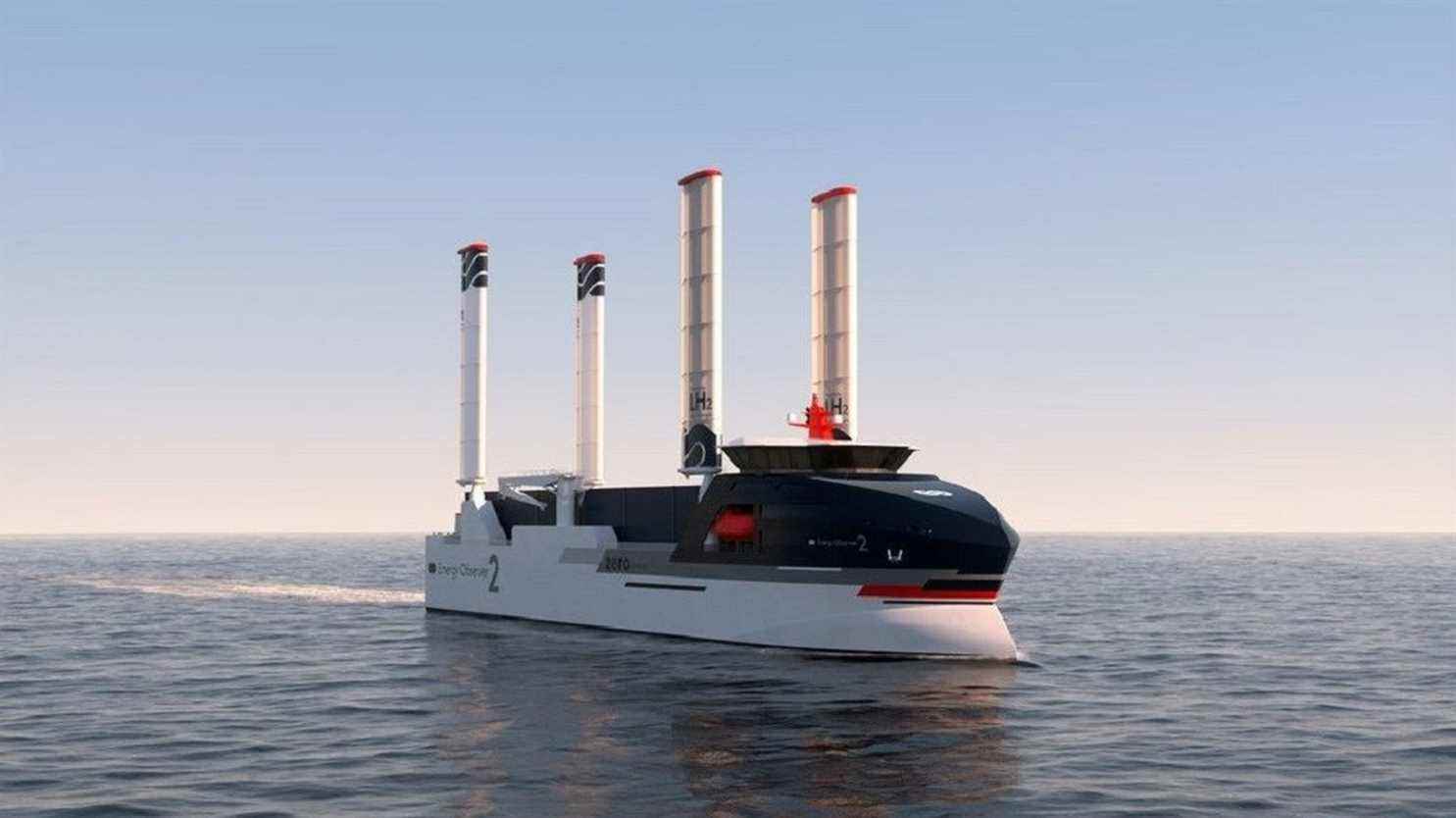Rapidly reducing the anthropogenic pressures on the oceans is what mobilized the representatives of the international community during the “One Ocean Summit” in Brest from February 9 to 11. Among the sources of stress, the maritime freight sector is already taking the task very seriously.
The sea route is an essential part of logistics. Nearly 90% of goods, to date, are transported by the oceans. Yet they represent only about 3% of global greenhouse gas emissions. Thus, despite the volumes of goods at stake, the seaway offers significant advantages. In fact, reduced to the ton transported per kilometer, it is at least 60 times less polluting than the road, in terms of CO2 emissions.
In addition to CO2, the massive use of heavy fuel oil, as engine fuel, poses a problem, because it emits large quantities of sulfur oxides, which are very harmful to health. These oxides are responsible for 100,000 premature deaths per year, according to the International Maritime Organization (IMO), which recently imposed an emissions threshold aimed at a drastic reduction in this type of pollution.
The IMO thus encourages players in the sector to invest in less polluting technologies. One of the world leaders, the French shipowner CMA-CGM has taken the lead, with the use of liquefied natural gas today, and in the near future, with hydrogen.
The Energy Observer company, which has already circumnavigated the world with a first energy self-sufficient ship, with no emission of particles or greenhouse gases, the Energy Observer, has announced the creation of a prototype cargo ship hydrogen 120 meters long, 22 meters wide and some 5,000 tons transportable.
“The world fleet today uses old thermal machines (highly polluting). Our ambition is to decarbonize heavy mobility, and the world in which we live.”
Victorien Erussard, President of Energy Observerat franceinfo
He adds that the Energy Observer 2 embodies a considerable potential advance, which can take precedence over this category of ships, which today represents around 37% of the world’s merchant fleet.
Energy Observer 2 will also be the result of collaboration with French industry flagships, such as the French company Air Liquide, the world leader in industrial gases. It will supply green hydrogen, produced by electrolysis from renewable energies, and stored in liquid form, i.e. at -256°C. In addition to zero-emission propulsion, this system offers precious silence for marine wildlife.
“The electric motor makes much less noise than a diesel engine. There we have hydrogen, a gas that will power a fuel cell, which itself will power an electric motor. In the end, it’s a lot less decibels in the water”, underlines Matthieu Giard, vice-president of Air Liquide, in charge of hydrogen activities.
Noise management is crucial because marine mammals communicate with each other through sound, which travels through water at over 5,000 km/h. Less noisy boats would in fact reduce the disruption of the migratory cycles of these animals.
This planned ship will also be equipped with sails in the shape of an airplane wing. Beyond the energy saving, of the order of 10 to 20%, the exploitation of a wind propulsive force presents a significant economic potential.
“Wind energy is free and available everywhere. There is an investment to be made, but once this investment has been paid off, the propulsive benefit is completely free”, precise Marc Van Peteghemnaval architect, contributor to Energy Observer 2.
These advances are a great opportunity for the sector, but also a necessity for the marine environment, which is facing an extraordinary increase in maritime transport. This is expected to quadruple by 2050.
